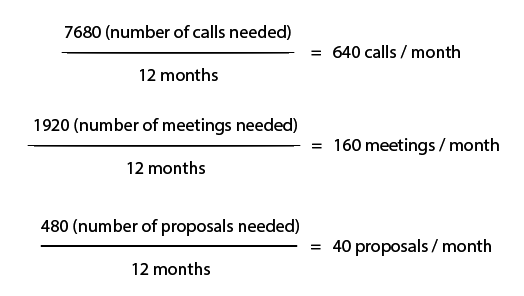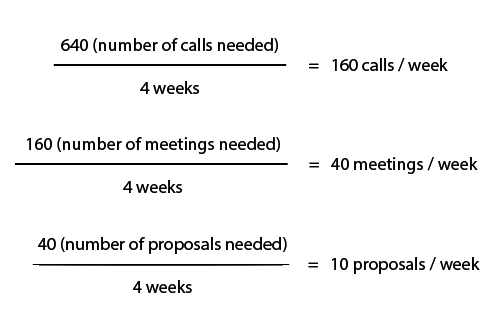Stop managing your sales reps solely around revenue. It’s never going to work.
Business results like revenue cannot be managed. They are out of our control. If we could manage revenue, then we’d all be hitting 100% percent of quota all the time.
 According to research, what is in your control are the inputs that lead to business results like revenue. In sales, these are the activities your reps perform every day. As Kellen James founding partner Jim O’Hara explained at a recent AA-ISP event, if your desired business outcome is to increase market share (a business result), then you would need to increase your share of wallet with more strategic account planning (a sales activity).
According to research, what is in your control are the inputs that lead to business results like revenue. In sales, these are the activities your reps perform every day. As Kellen James founding partner Jim O’Hara explained at a recent AA-ISP event, if your desired business outcome is to increase market share (a business result), then you would need to increase your share of wallet with more strategic account planning (a sales activity).
The key to managing sales performance lies in activity-based selling, where you identify your key sales activities and manage around them. Keep reading, and you’ll learn how to manage sales reps around the activities that drive revenue.
How to Manage Sales Reps for Predictable Revenue
1. Start with desired revenue goal.
Let’s say last year your team brought in $1 million, but you want to increase revenue by 20% percent this year. Your year-end revenue goal is $1,200,000.
Divide that number by your average deal size to determine how many deals you need to close. We’ll assume an average deal size of $10,000.
 You have to close 120 deals to reach your desired business outcome.
You have to close 120 deals to reach your desired business outcome.
2. Reverse engineer sales process.
Use your historical conversion rates (or industry averages) to determine how many of each activity it takes to close 120 deals. For the sake of simplicity, we’ll use a 25 percent conversion rate.
First, we’ll need to determine how many proposals it will take:
 Then the number of meetings it takes to get those proposals:
Then the number of meetings it takes to get those proposals:
 Finally, the number of calls needed:
Finally, the number of calls needed:
 To close 120 deals this year, your team needs to send 480 proposals, have 1,920 meetings and conduct 7,680 calls.
To close 120 deals this year, your team needs to send 480 proposals, have 1,920 meetings and conduct 7,680 calls.
3. Break activities down to daily, weekly and monthly goals.
Those activity numbers are pretty intimidating. Break them down into more manageable numbers:
 Not so bad, right? You can get even more granular:
Not so bad, right? You can get even more granular:
 These are your team’s sales activity goals.
These are your team’s sales activity goals.
4. Align team around metrics.
Assign these activity metrics to the individuals on your team according to whatever makes sense for your sales organizations: by sales role, by selling capacity, equally, etc.
Display your team’s metrics publicly and talk about them daily. Provide reps with personal scorecards to keep track of their progress. (A sales activity management system will automatically track pacing and let you know when it falls behind.)
Use contests and incentives to rally the team when sales metrics are off pace. And take advantage of this data in coaching sessions, too. When reps aren’t performing enough of certain metric, you know exactly what to coach them on.
With activity-based selling, you not only know how to manage sales reps around metrics that matter, but you gain control of your team’s performance by focusing on manageable sales activities, not business results. And managing sales performance is how to manage sales reps for more ROI.



